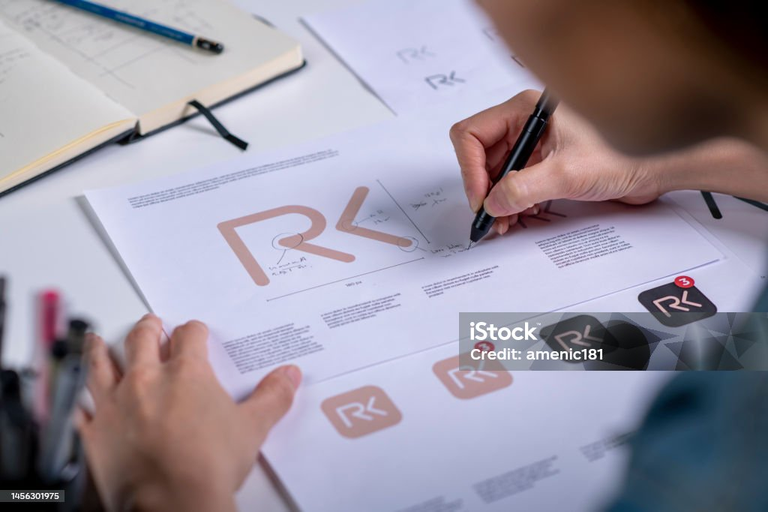Not all that glitters is gold, right?
We have many career opportunities in the design industry today, ranging from UI/UX Design to Motion Graphics, and finding the right career path can be challenging at first.
Among many other design roles, Graphic Design stands out as a promising option. Visual communication plays a crucial role in business success, making graphic designers highly valuable.
The path to becoming a graphic designer isn't as complex as it seems, and I’m here to guide you through a step-by-step process, so you’ll have a clear direction.
We'll cover everything you need to know to become a graphic designer.
Here’s an overview:
Who is a graphic designer?
Duties of a graphic designer
Skills required to become a graphic designer
Job requirements for graphic design roles
Roadmap to mastering graphic design
Who is a Graphic Designer?
A graphic designer is a professional who uses visual elements such as typography, imagery, color, and layout to create visually appealing designs for various mediums. They work on projects ranging from branding and advertising to packaging, web design, and more. Graphic designers combine artistic and technical skills to effectively communicate messages and ideas through their work.
The Role of Graphic Designers
The duties of a graphic designer typically include:
Conceptualization: Creating design concepts based on client briefs and project requirements.
Design: Producing visuals using design software, including layouts, logos, illustrations, and more.
Collaboration: Working with clients, marketing teams, and other designers to bring projects to life.
Presentation: Presenting design ideas and prototypes to clients for feedback and approval.
Revisions: Making changes to designs based on client feedback to achieve the desired outcome.
File Management: Preparing files for print or digital use, ensuring they meet quality standards.
Skills Required to Become a Graphic Designer
To become a successful graphic designer, you need a combination of artistic and technical skills. Here are some essential skills for a graphic designer:
Creative thinking: Ability to come up with unique and innovative design concepts.
Typography: Understanding how to use and pair fonts effectively in designs.
Color theory: Knowing how to use color to convey emotion and guide the viewer's attention.
Software proficiency: Familiarity with design software like Adobe Illustrator, Photoshop, and InDesign.
Layout and composition: Understanding how to arrange visual elements for optimal impact.

Communication: Ability to convey design ideas clearly to clients and team members.
Time management: Being able to work efficiently and meet deadlines.
Attention to detail: Ensuring all elements in a design are precise and accurate.
Job Requirements for Graphic Design Roles
To better understand what employers are looking for, it’s important to research job listings and descriptions on platforms like LinkedIn, Indeed, or Glassdoor. These sources provide valuable insights into the essential requirements and qualifications for graphic design positions.
Here are some examples of what job listings might stipulate:
Proficiency in design software such as Adobe Creative Suite (Illustrator, Photoshop, InDesign).
Experience with digital design and web technologies (e.g., HTML, CSS).
Strong portfolio showcasing a variety of design projects.
Ability to work collaboratively with teams and clients.
Excellent communication skills to articulate design concepts effectively.
Additionally, networking with professionals in the field can offer insights into what skills are crucial for success. Consider setting up informational interviews to gain a deeper understanding of the industry and guidance on starting your journey.
Step-By-Step Process to Master Graphic Design
Step 1: Design Fundamentals
Begin with the basic principles of design, such as balance, contrast, alignment, and repetition. Learn how to apply these concepts to create visually appealing designs. Focus on honing your skills in typography, color theory, and composition.

Learning resources:
Design Basics by Stephen Pentak
Online courses on design fundamentals
Step 2: Software Proficiency
Familiarize yourself with essential design software, such as Adobe Illustrator, Photoshop, and InDesign. These tools are industry standards and will be your go-to resources for creating designs.

Learning resources:
Adobe Illustrator tutorials
Adobe Photoshop tutorials
Adobe InDesign tutorials
Step 3: Building a Strong Portfolio
A strong portfolio is essential for showcasing your design skills and attracting potential employers or clients. Work on a variety of projects, including branding, digital, and print designs, to demonstrate your versatility.
Learning resources:
Creating a design portfolio
Portfolio review and feedback services
Step 4: Networking and Gaining Experience
Build relationships within the design community to gain insights and opportunities. Attend industry events, join online design forums, and consider internships or freelance work to gain real-world experience.
Learning resources:
Networking tips for designers
Online design communities
Step 5: Stay Updated
The design industry is constantly evolving, so staying up to date with the latest trends and tools is crucial. Follow design blogs, participate in webinars, and continue learning new skills to remain competitive.
Learning resources:
Design blogs to follow
Webinars and online events
Conclusion
The design industry offers promising career opportunities, and the starting salary for graphic designers can vary depending on experience and location. With dedication and continuous skill development, you can excel in the field.
Your journey to becoming a graphic designer begins with a strong foundation in design fundamentals and software proficiency. Build a robust portfolio, network with industry professionals, and stay updated with the latest trends to ensure success.
In essence, while not all that glitters is gold, the field of graphic design certainly shines bright for those willing to invest the time and effort to master its intricacies.

So be open to challenges, stay curious, and strive to become a successful graphic designer.
Good luck.